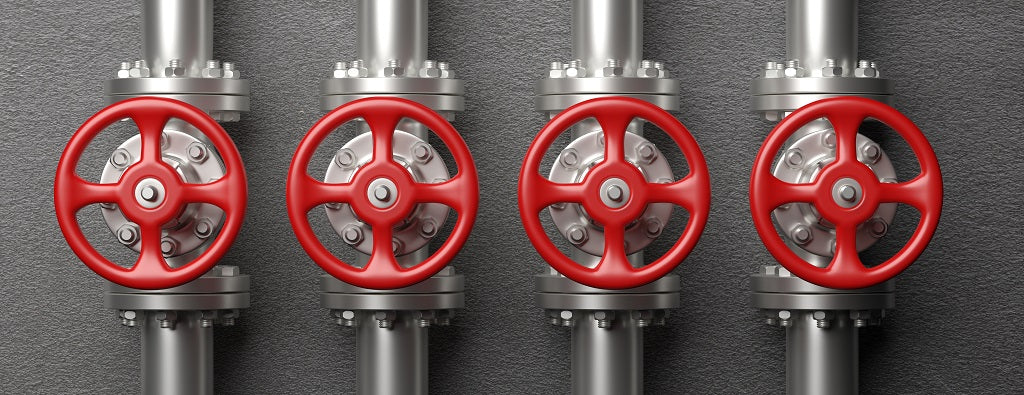Enhance Performance With Top-Quality Building Automation Controls Including Controllers
In the world of contemporary building administration, the implementation of high-quality structure automation controls, consisting of sophisticated controllers, has actually become a crucial element in enhancing procedures and maximizing effectiveness. As structures continue to progress into smarter, extra interconnected entities, the role of automation controls and controllers has never been a lot more critical.
Benefits of Structure Automation Controls
When executed efficiently, building automation controls offer a myriad of advantages to enhance operational efficiency and maximize source usage. One of the key benefits is the ability to control and keep an eye on various building systems such as cooling and heating, lights, safety, and much more from a centralized system. This centralized control permits better control and synchronization of different systems, leading to boosted energy performance and minimized operational costs.
Additionally, building automation controls give real-time data and analytics, enabling facility supervisors to make educated decisions immediately. By having accessibility to extensive understandings into power consumption, devices performance, and passenger habits, organizations can recognize areas for enhancement and carry out approaches to improve total building efficiency.
Additionally, automation controls assist in anticipating upkeep by finding prospective concerns prior to they intensify right into costly problems. This positive approach not only expands the life expectancy of tools but also lessens downtime, ensuring undisturbed procedures - control valves. Overall, the benefits of structure automation controls are important in enhancing procedures, increasing productivity, and producing a much more sustainable and comfortable atmosphere for residents
Trick Features of Controllers
Effective building automation controls are defined by a variety of key features that enable centralized management and optimization of various building systems. Controllers play a vital duty in this procedure by serving as the brain of the automation system. One key feature of controllers is their capacity to accumulate information from sensing units distributed throughout the building. This data is then utilized to make real-time modifications to heating, air flow, cooling, lights, and other systems to guarantee optimal efficiency and energy efficiency.
Furthermore, controllers offer the adaptability of programs schedules for various building systems based upon occupancy patterns, aiding to reduce energy wastefulness during off-peak hours. Additionally, the remote accessibility attribute of controllers permits facility managers to keep an eye on and control constructing systems from anywhere, enhancing comfort and responsiveness.
Furthermore, advanced controllers typically come geared up with predictive maintenance abilities, enabling proactive identification of potential concerns prior to they escalate, therefore decreasing downtime and maintenance expenses (control valves). Generally, the vital features of controllers are important in streamlining building operations, boosting convenience, and optimizing energy financial savings
Assimilation With Iot Technology
Structure automation controls, specifically controllers with their innovative features, effortlessly incorporate with IoT technology to transform building management processes. IoT modern technology enables these controllers to gather and examine information from numerous structure systems in real-time, offering unprecedented understandings into power usage, system performance, and resident habits. By leveraging IoT connectivity, constructing automation controls can maximize power effectiveness, boost owner comfort, and ensure proactive maintenance.
The assimilation of building automation regulates with IoT technology enables centralized monitoring and control of varied building systems remotely. This connectivity allows building managers to change settings, routine procedures, and get alerts on their computers or smart devices, enhancing operational efficiency and lowering maintenance costs. Moreover, IoT combination facilitates data-driven decision-making by providing workable knowledge based upon fads and patterns recognized with constant tracking.
Power Effectiveness Solutions

Structure automation controls, including power monitoring systems and programmable controllers, are crucial elements of energy performance services. These systems enable real-time monitoring of energy use, recognition of inefficiencies, and implementation of automated adjustments to maximize energy performance (control valves). By incorporating structure automation regulates with energy-efficient devices and modern technologies, facilities can enhance functional performance, boost resident convenience, and add to a greener environment

Enhancing Structure Protection
With a concentrate on enhancing operational facets beyond article power efficiency options, the next important element to resolve in building administration is the enhancement of protection steps. Building automation controls play a crucial function in strengthening safety and security by incorporating numerous systems such as accessibility control, monitoring cams, and intrusion detection. These controls not just simplify protection operations yet additionally offer real-time monitoring and notifies, enabling timely reactions to prospective risks.
Final Thought
Finally, developing automation controls, especially controllers, provide numerous benefits such as boosted efficiency, integration with IoT modern technology, energy effectiveness services, and enhanced safety measures. By utilizing premier structure automation controls, buildings can operate better and sustainably, resulting in set you back savings and improved general performance. Spending in these advanced technologies can dramatically enhance the operational effectiveness of buildings and add to a much more sustainable future.
In the world of modern building monitoring, the implementation of top-quality building automation controls, including sophisticated controllers, has become a pivotal facet in making best use of and simplifying operations efficiency.Reliable structure automation controls are identified by an array of vital features that allow centralized management and optimization of different structure systems.Building automation controls, specifically controllers with their advanced attributes, flawlessly incorporate with IoT technology to revolutionize structure management procedures.The integration of structure automation regulates with IoT technology permits for central monitoring and control of varied building systems remotely. By making use of top-quality building automation controls, buildings can operate a lot more successfully a fantastic read and sustainably, leading to cost savings and improved total efficiency.